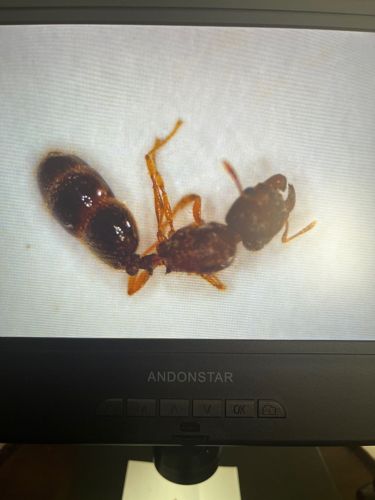Ant (likely a queen or reproductive female)
Scientific Name: Formicidae (family, specific genus and species cannot be determined from image alone)
Order & Family: Hymenoptera, Formicidae
Size: Varies greatly by species, but workers typically range from 2 mm to 25 mm. Reproductive females (queens) are often larger than workers.

Natural Habitat
Ants are found in nearly every terrestrial habitat type, from forests and deserts to urban environments. They typically build nests in soil, under rocks, in wood, or in human structures.
Diet & Feeding
Highly varied, depending on the species. Many ants are omnivores, feeding on nectar, seeds, fungi, other insects (live or dead), and honeydew produced by aphids. Some species are specialized predators or scavengers.
Behavior Patterns
Ants are social insects living in colonies that can range from a few dozen to millions of individuals. Colonies typically consist of one or more queens, sterile female workers, and male reproductives. They exhibit complex social behaviors including division of labor, communication through pheromones, and elaborate nest construction. The individual pictured appears to be a reproductive female (queen) due to its larger size and developed thorax, suggesting it may be a winged reproductive form (or a dealate queen that has shed her wings).
Risks & Benefits
Risks: Some ant species can be household pests, contaminating food and sometimes causing structural damage (e.g., carpenter ants). Certain species, like fire ants, have painful stings. Benefits: Ants play crucial ecological roles, including soil aeration, seed dispersal, nutrient cycling, and preying on other insects, which can help control pest populations.
Identified on: 9/26/2025